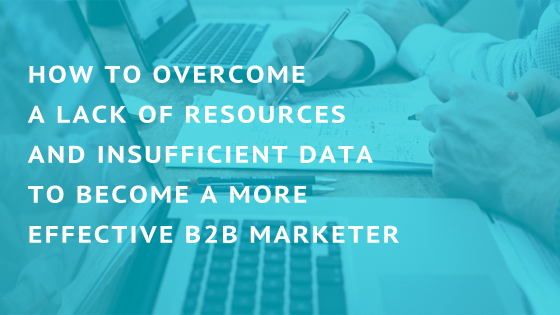Millennial B2B Buyers are on the Rise—6 Ways to Adapt Your Strategy

Millennials are causing new challenges for B2B companies with traditional marketing and sales structures. Here’s how you can adapt.
“When I was coming up in my career, cold calls and trade shows worked like gangbusters. But today, those tactics are a reliable loss and we are struggling to close new sales. I’m not sure how long we can keep burning cash—we’ve got to find out how to reach our customers.”
We hear comments like this often when talking to B2B CEOs and executives.
Here’s the question we ask back: “What are you doing to reach Millennials?”
The Rise of Millennial B2B Buyers
A joint Google/Millward Brown Digital report recently surfaced some fascinating insights into the changing face of B2B buyers:

With every passing year, millennials are only going to become more and more influential in the B2B buying process.
What does this mean for people like you and the CEO above?
It means we must understand and adapt to how millennials think if we want them to buy our products or services.
Reaching Millennial B2B Buyers
Your strategy to reach millennial buyers begins like reaching any other audience.
Find your buyer, plot their journey, plan a content strategy—it’s all stuff you’ve heard before. But even so, millennials are a very different group than the previous generation of B2B buyers.
To reach them, you’ll have to throw out a lot of your assumptions about the B2B buying process. To stay competitive, here’s what you’ll need to do:
Step #1: Identify Your Buyers
Crafting buyer personas is the first step in developing a strong inbound strategy.
At the least, you should have one buyer persona that covers millennial buyers (but you’ll probably want several). Here’s a few of the many questions we use to craft buyer personas at Adept:
- What are their titles or roles within an organization?
- How do they prefer to consume content?
- What drives their decision-making process?
Step #2: Understand & Embrace your Buyers’ Journeys
A 2016 Saucunas report showed the vast majority of millennials rated search engines and vendor websites as their most important resource for researching a new product or service.
At the bottom of that list was trade shows and industry publications.
This may seem downright heretical for many seasoned B2B professionals (like our CEO friend). But the data doesn’t lie.
You can map the buyer’s journey by answering a few simple questions:
- Who are we trying to reach with each product or service?
- What problems are they trying to solve?
- What questions will they ask when they’re serious about buying?
- What will help them decide to make a purchase?
Step #3: Get Buyers to Your Site and Turn Them into Leads
Effective content strategy generates website traffic and turns that traffic into leads.
Millennial buyers want to drive their research process. This means you should create valuable content, such as blog posts, social media content, and email. Then offer deeper content in exchange for more details about themselves.
Step #4: Use Content Strategy to Inspire Leads to Become Happy, Loyal Customers
Nurturing leads is just as important as generating leads through your content strategy.
Content marketing generates three times as many leads as traditional marketing. Even more impressive, nurtured leads produce 20% more sales opportunities than non-nurtured leads.
By delivering valuable content and carefully nurturing the relationship with your leads, you can earn their trust—which is the first step to earning their business.
Step #5: Use Inbound Sales to Connect on Their Terms
Millennials want personal interactions, but they hate being sold to.
That’s why inbound sales is the perfect way to reach millennial B2B buyers. It’s educational, respectful, and helpful—but not pushy.
It's even better for your sales team. An inbound sales approach allows the customer to guide the discussion towards the sale. It’s a win for both your sales team and the millennial audience.
Step #6: Embrace Technology (just like your Buyers)
Good content strategy requires serving the right content to your customers at the right time. On average, people engage with 11.4 pieces of content before making a purchase.
How are you supposed to keep track of which content potential customers engaged with?
First, you’ll need a solid Customer Relationship Management (CRM) tool. This helps you track customers as they move through their purchase journey.
You might also consider marketing automation to automatically deliver tailored content experiences to your audience.
Marketing automation works; B2B marketers who use marketing automation software increase sales pipeline contributions by an average of 10%.
Yes, You Can Reach the Rising Generation of B2B Millennial Buyers
As the number of millennial buyers and purchase influencers increases, their impact on the buying process will grow even stronger.
Connecting with them will make the difference between business success and failure. The ideas in this post are just the beginning.
To learn more, read our ebook “The Future of B2B Marketing In a Self-Service World.” Inside, we lay out a strategic framework that helps B2B companies reach their target customers—even the elusive millennial,
Download it now.

